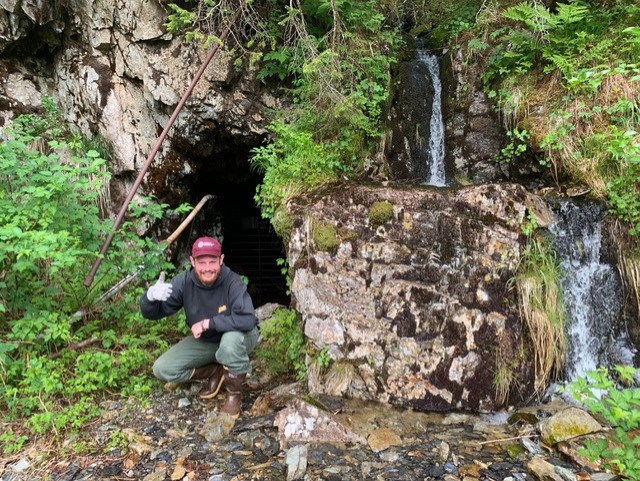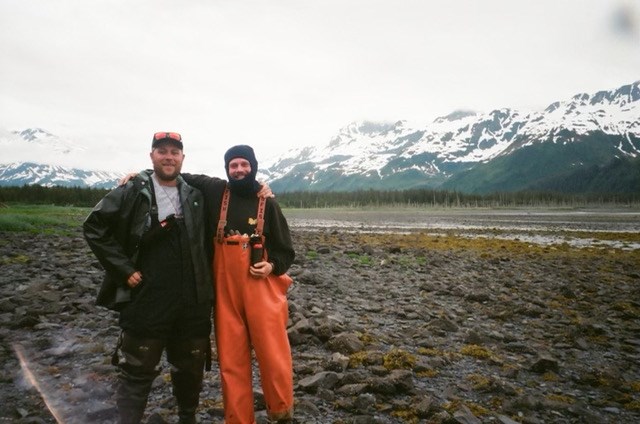Last updated: September 21, 2022
Article
Intern and Fellow Highlights: Martin Schneider

Courtesy of Martin Schneider
You may have heard of cultural resources, but what exactly does this work entail and what type of work do interns and fellows do? Find out through this intern and fellow highlight series that features the work of our interns and fellows service wide.
Everyone has a personal connection to cultural resources. Cultural resources help us define what makes us human through understanding the evidence we leave behind and continue to create today. This can include anything from archives, archaeological sites, museum collections, structures and cultural landscapes, and resources with significance to a group of people traditionally associated with them.
To learn more about cultural resources, visit the Cultural Resources, Partnerships, and Science Directorate page.
So... What exactly does a cultural resource internship look like?
Interns and fellows work with multiple offices, programs, and parks through partner organizations such as the American Conservation Experience (ACE) and National Council for Preservation Education (NCPE). They work on various projects that range from tribal consultation and policy to telling the stories of women in World War II and even to connecting local communities with public history.
Their work adds value to the National Park Service and supports our mission to preserve for the enjoyment, education, and inspiration of this and future generations.
Meet Martin Schneider (he/him), who is the American Conservation Experience (ACE) Cultural Resources Diversity Archaeology Intern at Kenai Fjords National Park.

Courtesy of Martin Schneider
Tell me a bit about yourself?
I am pursuing a Master's in Public History at SUNY Empire College. I received my bachelor's degree in history with a focus on cultural anthropology from CUNY Hunter College. My senior history thesis examined the development of the expanding British commonwealth through the lens of cross-cultural communication, particularly Caribbean music brought to Britain by the first West Indian immigrants of the late-1940s. I am incredibly passionate about heritage preservation and cultural resource management. While an undergraduate, I served as a volunteer researcher with the Ellis Island Immigration Museum maintaining historical archives and assisting curators with cataloging reports and data entry. I supported the Discography Project, which managed Ellis Island's musical archives. Songs in these archives date to the first decades of actual recorded music and reflect societal attitudes and biases against marginalized groups like African Americans, immigrants, and rural folk. While offensive by modern standards, these songs offer a profound contemporary for their time glimpse into American culture's historical evolution. I have worked extensively in historical conservation and have had the privilege of helping to restore some priceless historical and cultural artifacts. I served as a conservation specialist with Evergreen Architectural Arts, a specialty contractor and design studio focused on preserving historic buildings, artifacts, and works of art. I helped maintain a wide variety of landmark buildings, sculptures, and museum collections while conducting condition assessments, art handling, and customized conservation treatments. I am presently completing my term as an archeology intern with the American Conservation Experience at Kenai Fjords National Park.
Tell us a little bit about what you do in your position?
As an ACE intern, my job is to assist senior archeologists in conducting field research and investigations, maintaining and evaluating existing sites and projects, and performing data entry. I have gone on numerous backcountry excursions with the archeology team, hiking through dense vegetation and steep terrain, traveling to the park's far reaches, exploring historic mining remains, indigenous habitation areas, and hunting and trapping sites. Field operations included conducting transects through target areas, recording environmental aspects, and searching for potential archeological indicators. Field surveys at Kenai Fjords focused primarily on visible above-ground structures, like cabin footprints and unnatural changes in the vegetation, such as housing and cache pits. This is due to the dense, heavily forested landscape, making an archeological survey in Alaska very difficult. In addition to hands-on fieldwork, I manage federal archives, reorganizing, standardizing, and supervising the digitizing of archeological archives and site field reports of over 60 sites over the past 45 years. One of the most satisfying components of this position is seeing the data I've recorded in the field become an important part of the archives.
If you met a younger version of yourself, what would you tell them about your current career trajectory?
If I could meet a younger version of myself, I would tell him, to both of our amazement, of the progress I am making in the field of archeology. It was a childhood dream of mine to one day be an archeologist. Like most kids, I had an immense fascination with dinosaurs. My parents fostered this passion, taking me to the American Museum of Natural History almost weekly. Watching videos of paleontologists conducting excavations, using sifting screens, and unearthing never before seen fossils, I envisioned myself working alongside them. A younger version of myself would be overjoyed knowing I am making our dream a reality. Dig deep, literally and figuratively, in your passion for being an archeologist.

Courtesy of Martin Schneider
How do you see the field of cultural resources changing in the coming years?
One of the most critical ways cultural resource management will evolve in the coming years will be through a greater emphasis on the preservation of culturally significant sites, particularly in response to the damaging effects of the unfolding climate crisis. Historic sites, landmarks, and cultural resources across the country face worsening climate change related challenges, including rising sea levels, accelerated glacial melt, and larger, more common, and more intense wildfires. A new generation of cultural resource managers must adopt new mitigation tools to preserve our historical and cultural resources for future generations.
Where do you see yourself in the future?
In the future, I would love to continue pursuing a career in the preservation of historic cultural resources. Serving as an archeology intern this summer has an exceptional opportunity to combine my passions for history and culture. Before participating in this internship, I had almost no experience in the field of archeology. I had taken some archeology courses as an undergrad but never participated in a dig, fieldwork, or surveyed an area. During this experience, I learned that archaeology is not all about the excavation. The preservation and protection of archeological sites and artifacts are also crucial components. As someone passionate about preserving historical resources, this further motivated me to pursue a career in archeology. I am so grateful to ACE and Kenai Fjords National Park for the chance to immerse myself in the field and learn so much about archeology.
For more information on CRPS internship programs contact Paloma Bolasny at e-mail us
For more information on youth and young adult programs and opportunities in the National Park Service, visit Youth Programs (U.S. National Park Service) (nps.gov)
